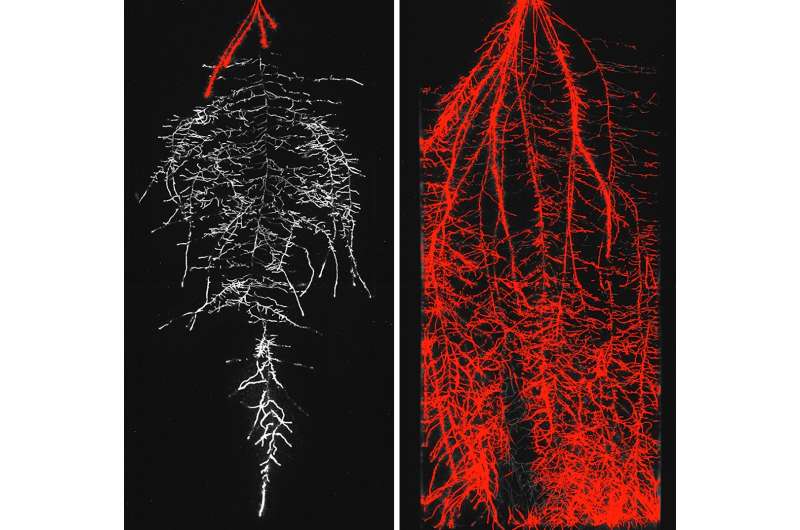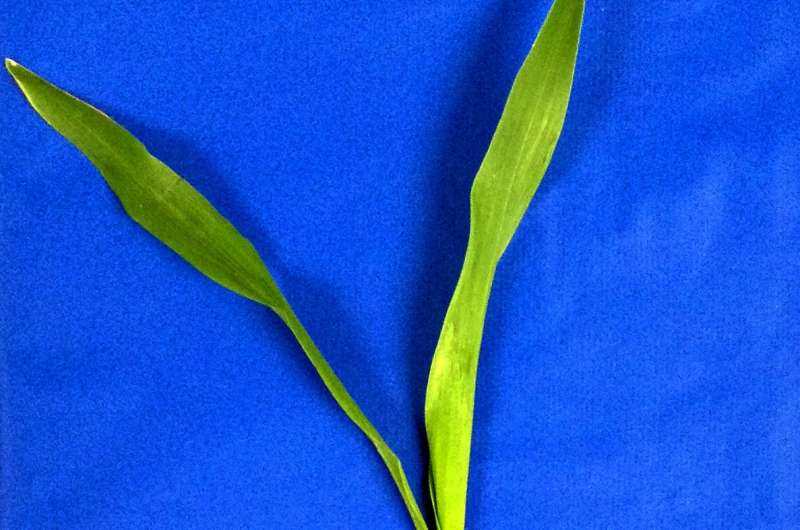Crop roots enact austerity measures during drought to bank water

With a growing world population and a changing climate, understanding how agriculturally important plants respond to drought is crucial. New work from a team led by Carnegie's José Dinneny discovers a strategy employed by grasses in drought conditions that could potentially be harnessed to improve crop productivity. It is published by Proceedings of the National Academy of Sciences.
Plants obtain most of their water through their roots. But there are different kinds of roots in different kinds of plants. This study focused on grasses, a family that includes maize, sorghum, and sugarcane and also represents key species used for human food, animal feed, and renewable biofuels.
The major conduits by which grasses take up water are the crown roots, which are unique to this plant family and grow from regions of the shoot at the soil surface, called the crown. The crown root system starts to form after the seedling has sprouted and continues to expand throughout the life of the plant.
"Crown roots are like the lanes of a highway connecting the suburbs to the city. As the plant grows, new lanes are added to this highway to increase the flux of water and nutrients from the soil to the shoot," explains Jose Sebastian, a post-doctoral fellow at the Carnegie Institution for Science, and lead author of the study.
Until now, little was known about how drought and low-water conditions affected crown root development in comparison to other types of roots, and how such changes might influence tolerance to stress.

Dinneny's team—which included current and former Carnegie plant biologists Jose Sebastian, Muh-Ching Yee (co-lead author), Willian Goudinho Viana, Rubén Rellán-Álvarez, and Charlotte Trontin—was able to demonstrate that water shortages suppress crown root growth in grasses.
The crown region of the plant is crucial for sensing water availability in the topsoil. When water is scarce, the development of crown roots is suppressed and the grass plant maintains a more limited root system, the team found.
"We normally think about roots as providing access to water, thus it was initially unclear why a plant would shut down root growth under drought," Dinneny explained. "We discovered, however, that this response allows the plant to slow the extraction of water from soil and bank these reserves for the future; sort of like the plant version of economic austerity."
Interestingly, these "plant austerity measures" are not permanent. When moisture is reintroduced into the soil, crown root growth is quickly reactivated, allowing grasses to benefit from the crown's powerful water-drawing ability.

Crown-root suppression is much less dramatic in domesticated grasses such as maize and millet than it is in wild, undomesticated versions of these same plants.
"This suggests to us that plant breeding has unintentionally affected these crop plants' abilities to cope with drought," Dinneny said.
This makes crown root development a potentially interesting target for those trying to improve crop yields, particularly under water-limiting conditions. Targeted breeding aimed at fine-tuning this response to drought in maize and other crop plants could improve their productivity and preserve precious ground-water resources.
More information: Grasses suppress shoot-borne roots to conserve water during drought, PNAS, www.pnas.org/cgi/doi/10.1073/pnas.1604021113
Journal information: Proceedings of the National Academy of Sciences
Provided by Carnegie Institution for Science



















